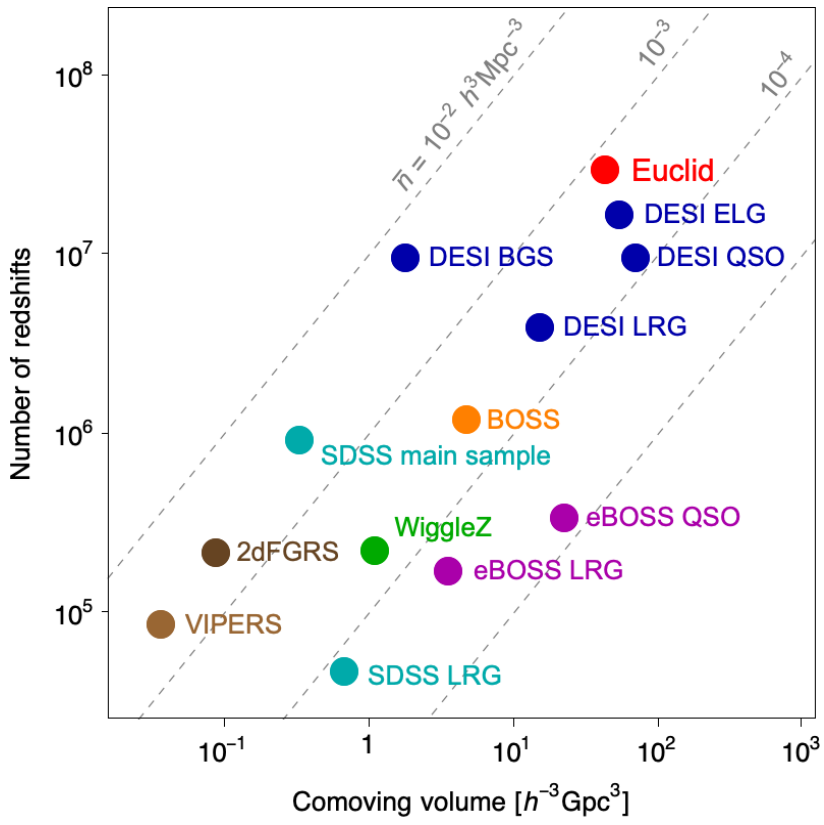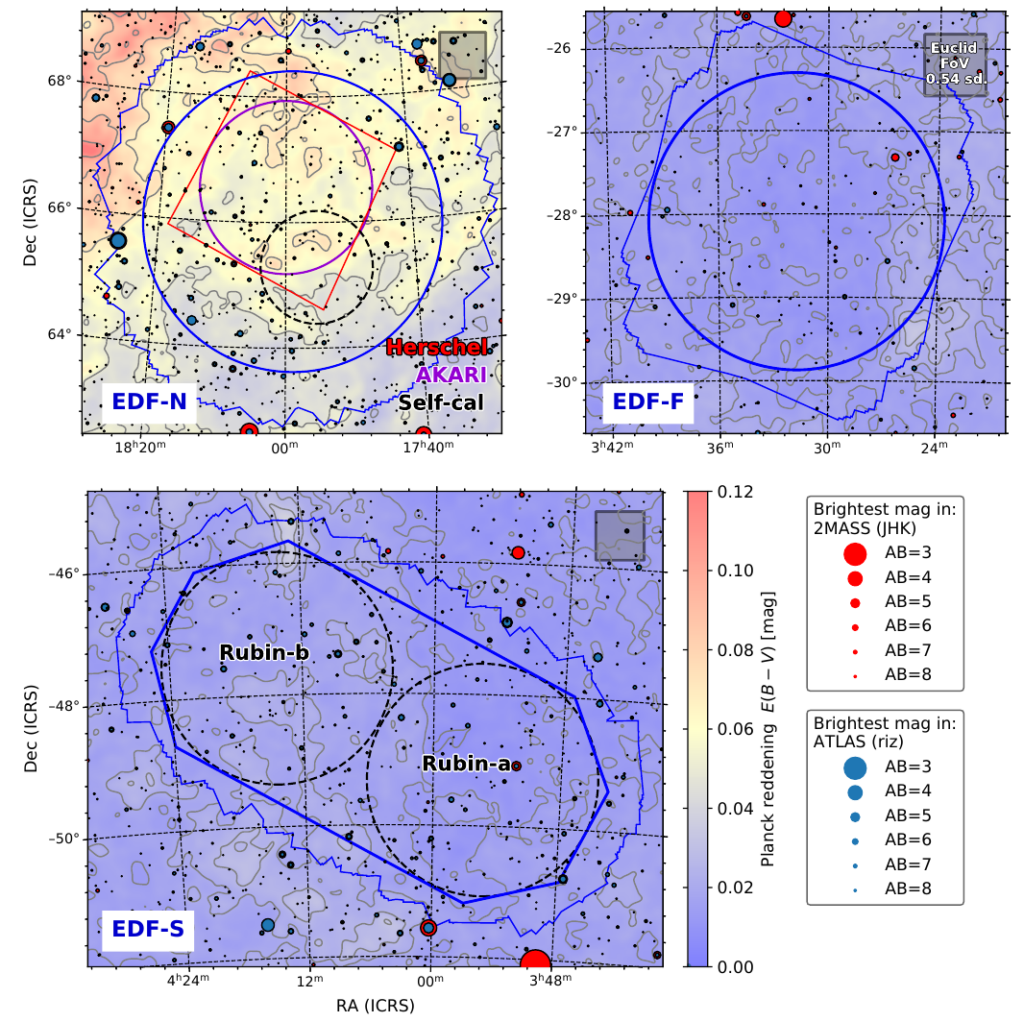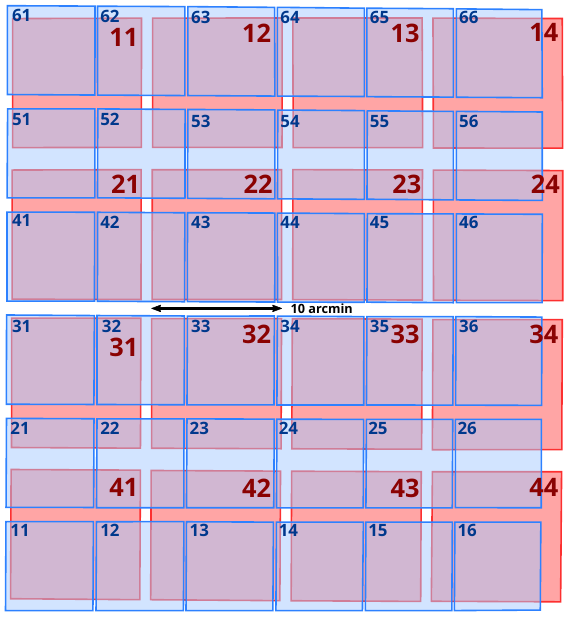Euclid is a complex mission, consisting of a spacecraft and scientific instruments, a massive cosmological simulation, and large and complex data processing segment to turn instrumental data into scientific meaning. Now, one year after launch, the Euclid Consortium has published a set of five reference papers, providing both the scientific background and an up to date description of the instruments and simulations. Paper 1 (Euclid. I. Overview of the Euclid mission, Euclid Collaboration: Mellier et al. 2024) is giving a full overview of the Euclid mission after launch, ranging from the overall background, the satellite and instruments, the surveys, and finally introduces both the cosmology diagnostics as well as astronomy projects envisioned with Euclid.
Find parts 2 and 3 of this paper series here: the Euclid Instruments and the Flagship Simulations
Euclid’s mission design description for the public was captured in a series of ESA reports, the final one was published in 2011 before adoption of Euclid as a mission: The “Euclid Study Definition Report” (Laureijs et al. 2011), usually referred to as the Euclid Red Book. This report was the primary public source both for the cosmology and astronomy science planned with Euclid, but also contained a breakdown of hardware and survey plans, including Euclid’s overall capabilities and limits. The Red Book was extremely successful in this role: it was cited more than 3000 times in the 13 years since its publication – more than 500x in the past 12 months alone.

Number of redshifts and the survey volume Euclid will observe, and comparison to ground-based surveys and projects. For cosmology Euclid will the have the largest number of source galaxies to work with.
But in 2011 Euclid was a mission concept, and both satellite and instrument hardware had only started to be built. Similarly, the major Euclid data processing system that is currently churning through Euclid’s massive daily observation data didn’t exist yet. So Euclid evolved, but not that much in fact. What did involve was the level of knowledge on hardware capabilities, data quality, and whether everything went fine – because a year ago Euclid was launched to the Lagrange Point 2 and by now has already surveyed more than 1000 square degrees of the sky. So this knowledge was compiled and published in May 2024 in a package of five mission reference papers. We had already reported the results from Euclid’s ‘Early Release Observation’ science and the publication of 10 science and these 5 reference papers, but we want to give a bit more background on the latter.
The first one, Euclid. I. Overview of the Euclid mission (Euclid Collaboration: Mellier et al. 2024, submitted to Astronomy & Astrophysics) is the direct successor of the Red Book. What is Euclid? What can it do? What are the plans? What data can I expect? And which cosmology and astronomy science projects are planned? The Euclid Consortium answers these questions – now with the experience of a complete telescope and set of instruments, and with the first data having been analysed. The paper has a whopping 95 pages and will be the main and central Euclid reference throughout the mission – of course amended by other publications as our knowledge is expanding.
Information ranges from the general placement of Euclid in context of existing and planned cosmological surveys. Euclid will determine the largest number of spectroscopic redshifts of all, several 10 million.

Positions and footprints of the three Euclid Deep Fields, including common footprints with other existing or planned datasets. The large blue circle in each footprint is the common field by all Euclid observations in the Deep Fields. The outer regions to the thin blue line are only covered to a partial depth.
The paper also describes details of the surveys Euclid will conduct, which includes the deep survey field near the ecliptic north and south pole as well as in Fornax. This will allow astronomers plan to observe auxilliary data in these fields ahead of the Euclid data releases – the first of which (“Q1”) will actually already cover these deep fields and will release data to the world in early 2025.
Something also of interest to the general astronomy community is that the VIS and NISP instruments cover almost the same field on the sky in a given exposure. Due to the somewhat different layouts the fields do not coincide 100%, but with the 4 exposures, with slight offsets, that are observed for each field the sky is seamlessly tiled by both instruments.

Common footprint of the VIS (blue) and NISP (red) instruments on the sky. The numbers mark the detector names in the VIS and NISP focal plane mosaics.
There is much more in this paper, a description of all major cosmology diagnostics that are planned with Euclid data and a list of other, astrophysical projects that are planned. Most science described there is just a glimpse of things to come, but over the next years the first astronomy studies will get completed, followed by initial cosmology results in 2026. Many papers will follow – but this reference paper is here to stay.
Article: Euclid. I. Overview of the Euclid mission, Euclid Collaboration: Y. Mellier + 1109 further authors, submitted to Astronomy & Astrophysics, arXiv:2405.13491


